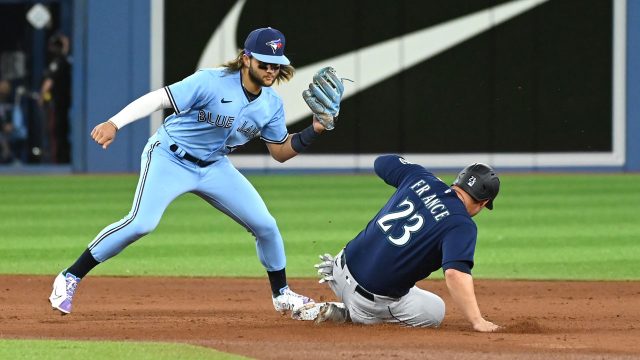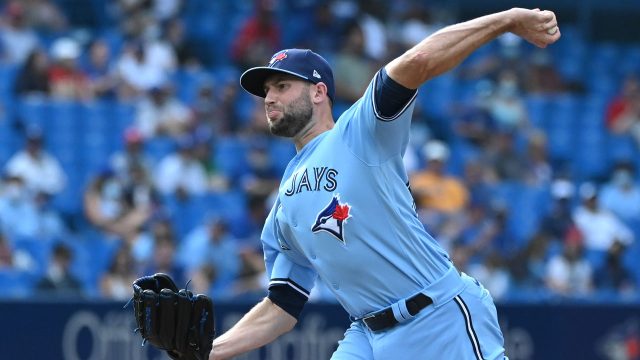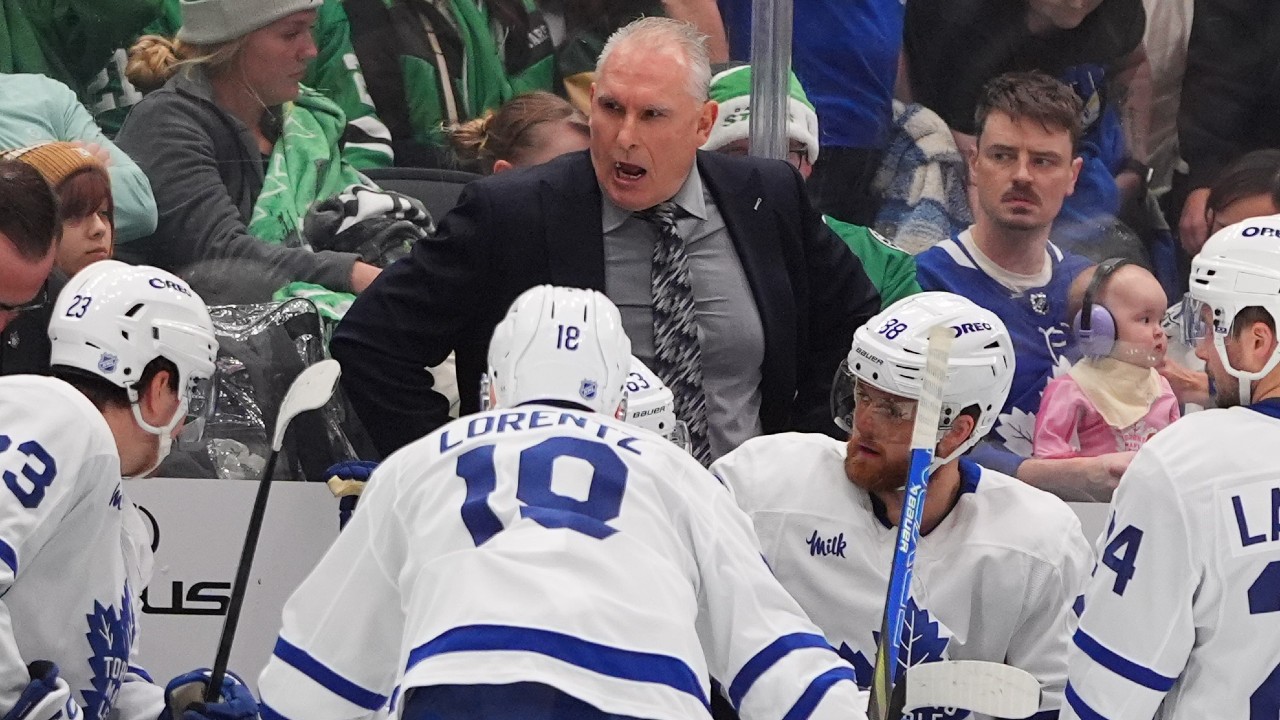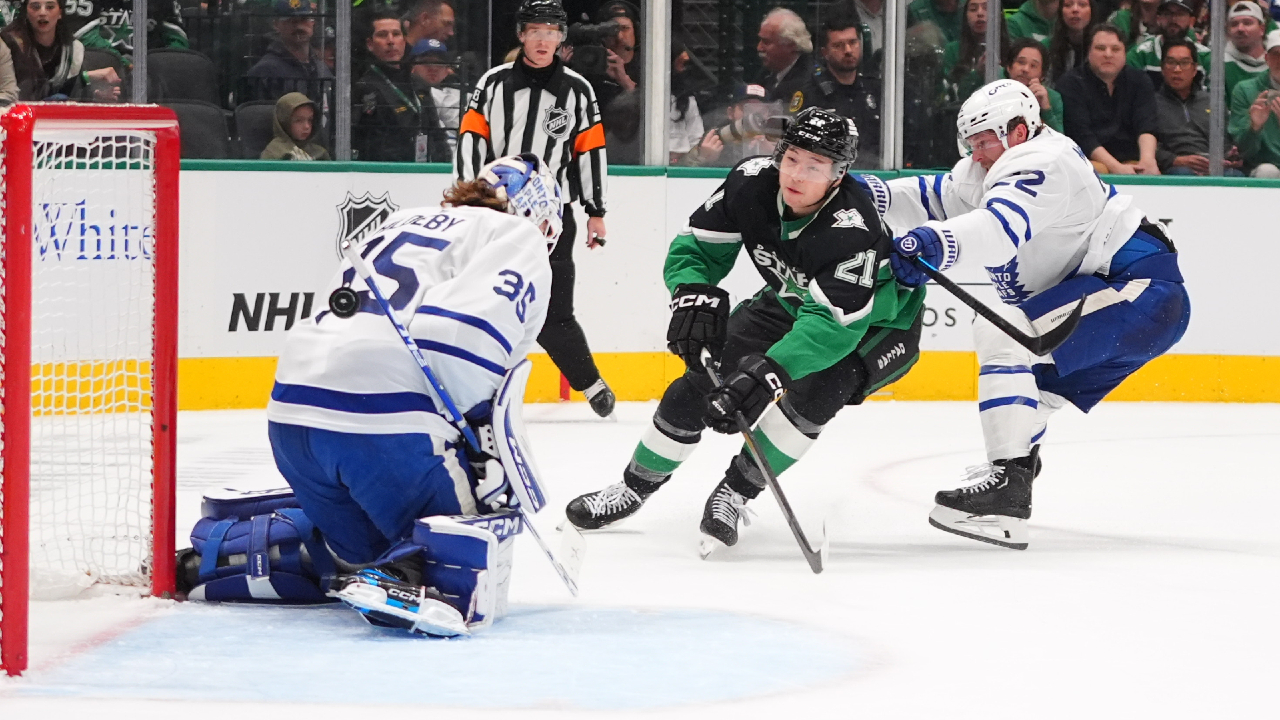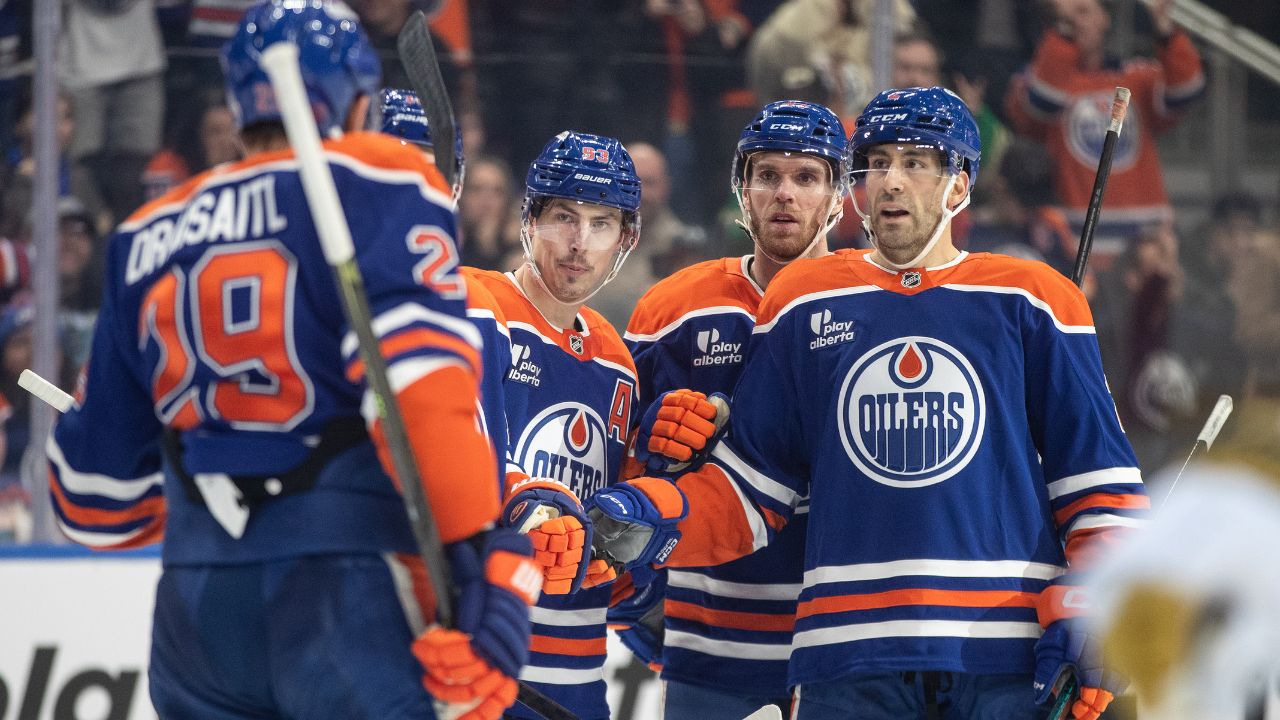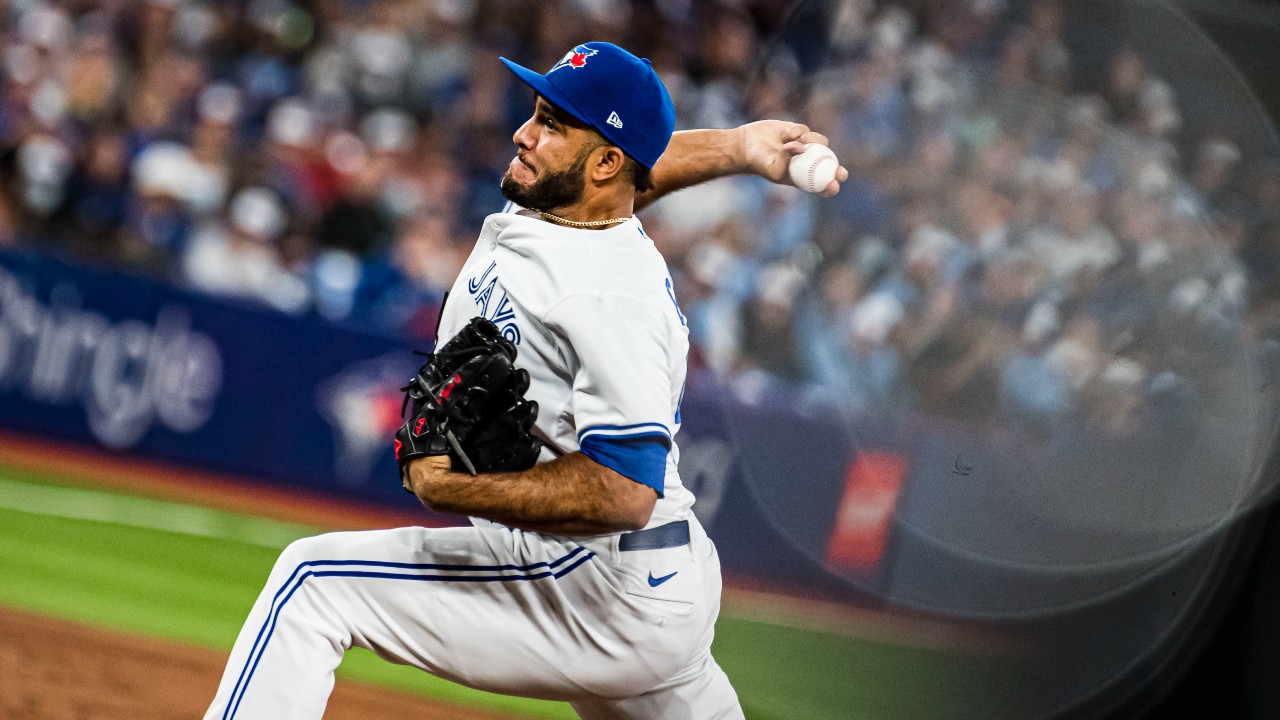
TORONTO – When Ross Atkins settled in to watch the Blue Jays’ Class-A affiliate Sunday night, he was hoping to see some of the organization’s young arms first-hand, watch the automated strike zone in action and catch up with former pitcher C.C. Sabathia, now a special assistant to commissioner Rob Manfred.
But even the most optimistic of general managers wouldn’t have expected what followed.
Making his first game appearance since undergoing Tommy John surgery, 2020 fourth-round pick Nick Frasso struck out eight Tampa Tarpons over three innings while touching 100 mph multiple times. Next up was right-hander Dahian Santos, an athletic 19-year-old signed out of Venezuela, who struck out 10 over four innings thanks to a fastball that topped out at 93 mph and a swing-and-miss slider. Finally, left-hander Braden Scott used an effective two-seamer to whiff six over the game’s last two innings and close out the 1-0 win.
All told, the Dunedin Blue Jays struck out 24 batters in nine innings, a minor-league record that stands in stark contrast to a big-league team searching for ways to strike out more hitters late in games. To say the prospects impressed their GM would be putting it mildly.
“Just happened to be there to watch one of the more dominant performances I’ve seen,” Atkins said. “We’ve been working really hard to put our pitchers in a good position and we’ve taken some pretty big risk in swinging big in terms of development. To see those outcomes is very exciting.”
Adding to the achievement, this wasn’t the product of a single umpire’s idiosyncratically large strike zone. An automated strike zone was in use for the game, which meant the pitchers weren’t getting calls on borderline pitches.
All season, the Dunedin Blue Jays have been striking people out with a Florida State League-leading 31.2 per cent K-rate. This time Ricky Tiedemann was on the bench, but the 2021 third-rounder’s arguably Dunedin’s top pitching prospect with plus stuff that’s generated 49 strikeouts in just 30 innings this season. In Atkins’ view, the success comes from prioritizing upside when acquiring and developing talent.
“Just shooting for really high outcomes for our pitchers,” he said. “Looking for velocity. Looking for more depth to their pitches and knowing that command comes potentially at an expense when you’re hunting those things.”
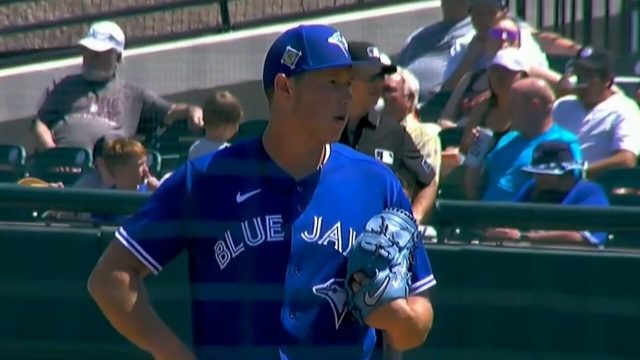
Yet as impressive as those minor-league results are, the Blue Jays don’t have enough swing-and-miss in their big-league bullpen right now – especially while Jordan Romano and Tim Mayza are sidelined (Romano’s gastrointestinal infection isn’t believed to be serious nor is Mayza’s forearm inflammation).
Entering play Thursday, the Toronto bullpen ranks 26th in baseball with a 21.0 per cent strikeout rate and 25th among the 30 teams with a 10.6 per cent swinging strike rate. While the individual samples are still relatively small, they’re moving in the wrong direction as a group. For instance, Yimi Garcia‘s striking out 13.8 per cent of hitters, down from 25.3 per cent a year ago, while David Phelps, Trevor Richards and even Romano have seen their strikeout rates drop as well. Put simply, this bullpen needs more whiffs.
“It’s definitely something we’re talking about,” Atkins said. “We have the weapons to put guys away. Some of it’s going to be execution. Some of it’s going to be pitches that we’re actually calling against certain hitters. It’s definitely something we’re drilling down on.”
The way manager Charlie Montoyo sees it, the bullpen deserves credit for covering lots of high-leverage innings. At the same time, what manager wouldn’t welcome more swing and miss options late in games?
“Our bullpen has been outstanding,” Montoyo said Wednesday. “The one thing about them is they’re not really striking out people, but our defence has been good, so it doesn’t concern me. I’d be concerned if our defence wasn’t good, but our defence has been good. Keep hitting the ball to (Gold Glove winner Matt Chapman at) third.”
Internally, the Blue Jays believe they can improve their strikeout rate by working with their staff to call the right pitches and locate them in optimal spots. Some help may be coming, too, as Nate Pearson’s set to face live hitters again in extended spring training. Like Frasso, he has a fastball that can reach triple digits, but unlike the prospect, he already has some valuable MLB experience.
“He needs to obviously earn getting back up here from a physical standpoint and then fundamentally he needs to be built back up in a Triple-A game,” Atkins said. “He’s definitely someone who we still view contributing in a bulk role.”
Still, Pearson’s progression has been slow ever since he contracted mono and he’ll likely need multiple rehab outings at Triple-A before he’s a real consideration at the big-league level. Of course, the likes of Frasso, Santos and Scott are much further away, impressive though their recent performance undoubtedly was.
As the summer unfolds, the resulting dynamic could create some tough decisions. It’s easy to imagine the Blue Jays as buyers in the bullpen market come July, and sellers around the industry are sure to notice the swing-and-miss stuff at Dunedin and inquire about potential trades.
But for a Blue Jays team that talks about winning sustainably, the likes of Tiedemann, Frasso and Santos won’t be moved recklessly. Acquiring present day swing-and-miss without sacrificing future whiffs may prove to be one of Atkins’ bigger challenges.


